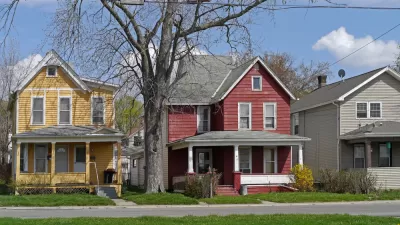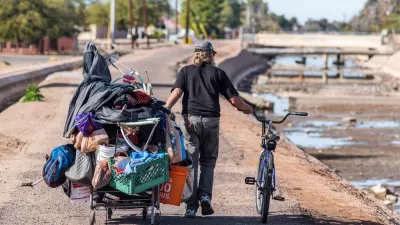Due to stagnant wages and the lack of affordable housing in many U.S. cities, even people with jobs are finding themselves slipping into homelessness.

In a feature piece, Brian Goldstone examines the plight of the "working homeless"—people who are working but struggling with low wages, high housing costs, and unstable housing situations. "Theirs, increasingly, is the face of homelessness in the United States: people whose paychecks are no longer enough to keep a roof over their heads."
Goldstone explores the struggles of this largely overlooked group of Americans through the experience of a family in Atlanta contending with the cycle of precarious housing. He follows them as the face an unexpected rent increase, lose their home after their rental home is condemned, and live in temporary housing in a motel and with friends and relatives.
Helping people once they are homeless is not the solution, writes Goldstone. "The task is to prevent it from happening in the first place, by striking at its root source: the vastly bigger but less conspicuous problem of housing insecurity, now afflicting the nearly eleven million renter households that are severely cost-burdened."
Tenant protections and rent control are two effective strategies to keep people from falling into homelessness. "Most advocates agree, however, that lasting change will come only through massive government reinvestment in low-income housing, livable wages (including pay protections for the growing number of gig workers), and an openness to alternative models, such as community land trusts and limited-equity cooperatives," notes Goldstone.
FULL STORY: The New American Homeless

Alabama: Trump Terminates Settlements for Black Communities Harmed By Raw Sewage
Trump deemed the landmark civil rights agreement “illegal DEI and environmental justice policy.”

Planetizen Federal Action Tracker
A weekly monitor of how Trump’s orders and actions are impacting planners and planning in America.

Why Should We Subsidize Public Transportation?
Many public transit agencies face financial stress due to rising costs, declining fare revenue, and declining subsidies. Transit advocates must provide a strong business case for increasing public transit funding.

How Housing as a Financial Product Harms Communities
Institutional buyers who treat housing as an investment product become disconnected from the impacts of higher rents, displacement, and housing instability.

Blinded by the Light: When Brighter Headlights Decrease Safety
Bright LED headlights can create glare and reduce visibility for other drivers and pedestrians.

Study Links Covid and Poor Driving
The effects of the virus, including ‘brain fog,’ can make driving more difficult and dangerous.
Urban Design for Planners 1: Software Tools
This six-course series explores essential urban design concepts using open source software and equips planners with the tools they need to participate fully in the urban design process.
Planning for Universal Design
Learn the tools for implementing Universal Design in planning regulations.
Caltrans
Smith Gee Studio
Institute for Housing and Urban Development Studies (IHS)
City of Grandview
Harvard GSD Executive Education
Toledo-Lucas County Plan Commissions
Salt Lake City
NYU Wagner Graduate School of Public Service





























